Review Essay of “Simone Weil and Her Writings”
Eric SpringstedSimone Weil: Basic Writings, edited and translated by D. K. Levy and Marina Barabas. Routledge: London, 2024. 389+lxiii pages. $40 (paper)
David Levy’s and Marina Barabas’ newly published anthology of Simone Weil’s essays, all freshly translated, and comprehensive to a degree that we have not seen in English to date, is a welcome addition to what is currently available. It will surely become a standard edition that both students and Weil scholars will use. To help gauge its import, it may be helpful before we look at its many fine features to get a sense of what we have had in the past, what we currently have, and why we have it.
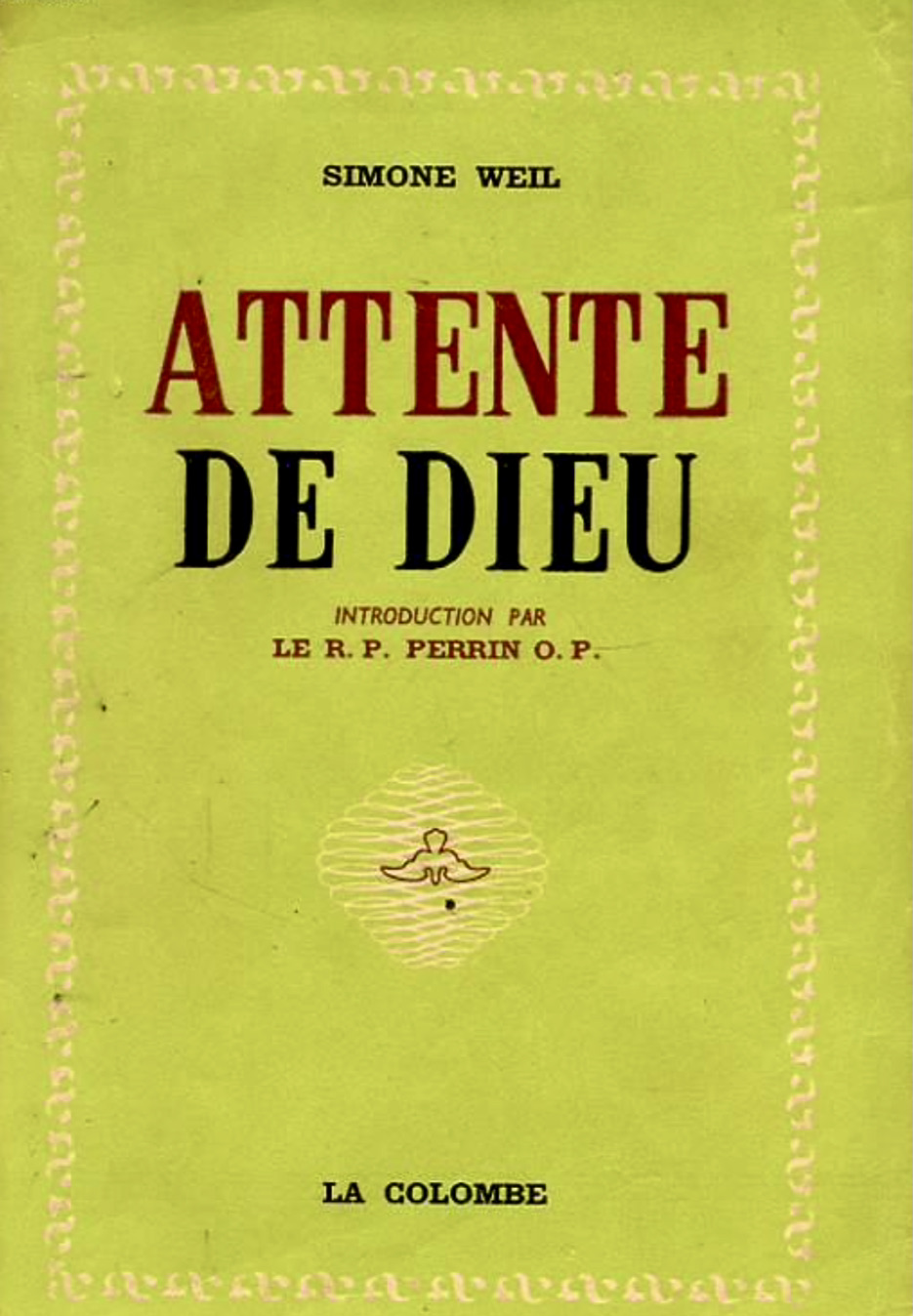
The History of Weil’s Writings Published in English
It is well known that Simone Weil published very little in her lifetime, and that which was published was in journals of limited distribution. However, thanks to her friends, Father J-M. Perrin and Gustave Thibon, Attente de Dieu, a collection of her letters to Perrin, and a set of striking essays, appeared in 1950, while earlier Thibon had put together a set of aphorisms drawn from her notebooks in 1947 under the title La Pesanteur et La Grâce.
Both works were quickly translated by Emma Craufurd, and appeared in English in 1951 and 1952 respectively. Brice Parain, an editor at Gallimard brought out L’Enracinement in 1949, which was also quickly translated by Arthur Wills, appearing in English in 1952 as The Need for Roots. Weil’s numerous essays then flowed into print in French at a steady rate through the 1950s, appearing in Albert Camus’ Espoir series from Gallimard. By the end of the 1960s, most of them also appeared in English thanks to the diligence of Arthur Wills and Richard Rees, two of the many people who came into contact with Weil’s parents.

Simone’s mother, Selma, was particularly keen to see her daughter’s writings published, and welcomed her numerous admirers into the Weil home on the rue Auguste Comte, electing Wills and Rees to translate Simone’s writings into English. With the addition of a translation by Elizabeth Chase Geissbuhler of several of Weil’s writings on the Greeks under the title Intimations of Christianity among the Ancient Greeks, the resulting English language corpus was extensive. In fact, several items in the 1960s were available only in English, not having appeared yet in French. These included several letters in Rees’ Seventy Letters, Weil’s earliest notebook in First and Last Notebooks, and some entries in Wills’ translation of the Notebooks of Simone Weil. (A number of her mathematical jottings there had been kept from the French edition, as Simone’s brother André, one of the twentieth century’s greatest mathematicians, deemed them insignificant and embarrassing.)

A few other important works appeared in the 1970s – Lectures on Philosophy, and “Letter to a Priest” in a collection titled Gateway to God. Somewhat later, in 1987, a volume titled Formative Writings edited and translated by Wilhemina Van Ness and Dorothy McFarland, gave us a welcome translation of Weil’s factory notebook and her diploma essay Science et Perception dans Descartes, as well as some other shorter essays. At this point, the corpus of Weil’s essays to be published in English for the next few decades was set. It was relatively thorough.
Some significant philosophical essays were still not translated. Several of her writings that were deemed to be largely of interest to the particular French situation also were not. Unfortunately, by then what was available for acquisition outside after-market booksellers began diminishing. Most notably, Rees’ four volumes – First and Last Notebooks, Selected Essays: 1934-1943, Seventy Letters, and On Science, Necessity, and the Love of God – only had a single printing, taking out of print several important essays by the mid-1970s. This lacuna was filled by a couple of anthologies – The Simone Weil Reader, edited by George Panichas in 1977, and another by Sian Miles in 1988. Each was able to recycle some essays from the Rees’ volumes. But a number also disappeared from circulation. It did not help that The Simone Weil Reader, which was the more extensive of those two anthologies, did not itself stay in print past the mid-1980s. Moreover, several significant essays still had not seen the light of day in English.

Begging the reader’s pardon for the personal reference, hoping to remedy the situation, I approached Oxford University Press in the early 1990s seeking to get them to reprint the Rees’ edited volumes, or to get permission to have SUNY Press reprint them in a series of books on Weil that I was editing at the time. Unfortunately, the copyright had reverted to Rees’ estate, which was represented by a firm acting as his literary agent. Although it permitted the reprint of various essays from time to time, it was unresponsive when it came to executing a deal that would get all four volumes reprinted. So, the project had to be set aside. In 1988, however, I was able to get some essays reprinted, along with some previously untranslated works and an early translation by Marina Barabas of “Are We Struggling for Justice?” in Selected Writingsfor Orbis Press’s Modern Spiritual Masters Series.
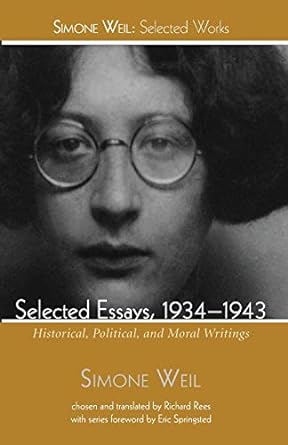
Thankfully, in 2015 things began to open up again. Working with the publishers Wipf & Stock, I was able finally to convince Rees’ literary executors to let us reprint Selected Essays, First and Last Notebooks, and Seventy Letters in their entirety. I did not seek to reprint Science, Necessity, and the Love of God (my personal favorite) because I had already used several essays from that volume in Selected Writings, and I wanted to supplement many of the remaining ones with several untranslated works, such as “Essay on the Concept of Reading,” and “Some Reflections on the Concept of Value.”
An entirely new volume was thus warranted. The task of getting it published was eased immensely as the copyright on Weil’s works in French expired in 2013, which encouraged new translations. Thus, I was able to get Simone Weil: Late Philosophical Writings published with the University of Notre Dame Press in 2015. Since then, several works have appeared that had not been translated into English before – her play Venise Sauvée, her poetry, and the essay “The Abolition of All Parties.” In 2003, a critical edition with a new translation of “The Iliad: Poem of Force” by James Holoka had appeared.
All of which brings us to David Levy’s and Marina Barabas’ Simone Weil: Basic Writings, and all of which lets us see that its significance is major. We have not had anything like it in the past, and we certainly do not have anything else quite like it now. It consists of twenty-one of Weil’s essays, two of which have not seen the light of day in English before; all are newly translated. It also includes as an introduction a thoughtful and penetrating essay by Levy on Simone Weil as a philosopher.
As a whole, Simone Weil: Basic Writings puts in one place several of the most representative and important of Weil’s writings. For those who are interested in pursuing her thoughts in any depth and breadth, it will be essential. It will also save such readers the laborious effort of tracking down many of the included essays across several otherwise scattered volumes. For those who need to select books for a class or seminar to teach Weil, this book is pretty close to one-stop shopping. For all these reasons it is worth giving the reader a detailed sense of this important contribution to the Weil corpus in English.
David Levy’s Introduction
Anthologies can be general, or they can focus on a specific aspect of a thinker’s writings. While this anthology is broad, the editors view Weil chiefly as a philosopher. This is clear from Levy’s forty-five-page introduction. Levy does not try to present a light overview, nor try simply to introduce the many essays in the collection. He sets out to give the reader an in-depth understanding of Weil as a thinker and of how her thought hangs together in the many disparate topics with which her essay deal.
At the outset, Levy notes that there are two pillars in Weil’s thinking:
First, as she thought about human life, she thought about it in terms of justice and a just society, and did not do so simply in pragmatic terms. Human beings need justice; at the center of their being they have an “exigence” for the Good.
The second pillar is Weil’s thinking about what constitutes human freedom, and again, she defies almost all contemporary options.
These two pillars ground her thought in what she deemed the supernatural. These things are the main attributes of the scaffolding that she erects from many sources, most notably Plato, and also Christianity, to build her particular essays. But hers is not a metaphysical approach or a spiritual one simpliciter. Levy accurately points out the degree to which she is also committed to a strong sense of life being lived with the dictates of “necessity,” the natural laws that determine not only our physical being but our social life, and our senses of self. What becomes important here, then, and it is to Levy’s great credit that he recognizes it and emphasizes it, is her concern with how the supernatural is mediated to human life, and how life needs to be led with a sense that the supernatural always comes wrapped and often hidden in necessity. One needs to applaud him here for including as part of the collection the essay “The Pythagorean Doctrine,” which is not easy, and therefore under-treated in most secondary literature – the work is nonetheless essential to understanding Weil’s thinking about mediation, necessity, and God.
Levy also deserves credit for being quite frank about Weil’s own intellectual evolution. For someone whose life was short, her thinking did have distinct early and late phases, and Levy treats the latter as the more important. The change largely comes at the point of her eye-opening experiences during her year of factory work, and her three major religious experiences. As Levy points out, its philosophical import is that in her earlier thinking Weil kept trying to figure out how to impose order to make human life livable and just. In her latter works, she sought to recognize order where it was. This is a subtle change, but a very big one concerning how one lives life, how one approaches thinking, and how one approaches questions of action and justice.
All this is quite right, and the reader is fortunate to have someone as intellectually sensitive to the various levels of Weil’s thought to write this introduction. It is crucial to recognize that there are levels. Where a question remains, and I think this is a central concern for all discussions of Weil’s thought, is how these levels –inherent in her discussions of necessity, Plato, the supernatural, God and Christ, and the various other religions that she was intrigued by — go together.
For his part, Levy suggests a couple of ways. One is that while he certainly sees the importance of Christianity to her and her writing, he argues that “it would be a mistake to think of Weil as an essentially Christian thinker, even more so a mystic.” (xiii) The emphasis here seems to be on the “essentially” qualification as Levy defends the claim by noting that Weil found inspiration in other sources. Moreover, she was chiefly a philosopher, and he thinks “a metaphysical and epistemological foundation emerges that is undeniably that of a philosopher.” (Ibid.) This is not to dismiss her Christianity, as later Levy talks about her developing her thought in both a Christian stream and in another one that uses different language. But are these binaries quite so opposed as Levy makes them appear here? There is certainly a lot in Weil that she flat-out deemed as a mystical option. For her, it was a positive and conscious choice. And, why not?
Moreover, in Marseille, in her many writings on the Greeks, Weil wrote them to try to show Father Perrin the universality of grace, which is to say that the Greeks and Christianity had a common core. Her approach to philosophy (rather like that of the “Christian philosophers” in the early centuries of Christianity) seems not to distinguish so easily between what was philosophy and what was not – i.e. Christianity or pretty much any self-involving talk about God or mysticism. That may well be one of the most important lessons she has to teach the contemporary mind in its various intellectual silos.
Let me be clear: I think Levy is not trying to ignore any part of Weil’s wide range of thought. He tries to give due credit to those interested in her but who may not have an interest in, say, her Christianity. But, and this is a central and abiding question about how to approach Weil: How does one look at how she was at the same time one who was a Christian who often deliberately invoked a mystical option, a thinker who held a universalist view of grace, and a philosopher? I am not entirely convinced by Levy’s approach. But I am truly interested in talking about this because it does lead to a distinctive part of her thinking. I hope that the reader of all these essays is likewise receptive to entertaining this discussion.
The Selection

The main contents of this volume consist of twenty-one Weil essays. They are all complete essays, the one exception being a twenty-eight-page excerpt from The Need for Roots, here titled “Prelude to a Declaration of Duties toward the Human Being.” The assumption is, quite rightly, that Weil wrote essays, and if one wants to follow her thought one needs to do so not in aphorisms or maxims, but in complete pieces. Notably, two essays have not appeared before in English: “Concerning Syndicalism ‘Single, Apolitical, Mandatory,’” from 1938, and “Sketch of the “Commentary on Pythagorean Texts.”
“Legitimacy of the Provisional Government” (from her last works in London) had been translated earlier, but was largely unavailable as it was published only in a scholarly philosophical journal.
The essays are sorted and divided very generally under the headings of “Here Below,” “Mediation,” and “Beyond the Sky.” The order of each section is not chronological. Each essay is given some brief context at the end of the essay. In the margins, the corresponding page number from the Œuvres complètes is helpfully given for those scholars who have access to that important resource.
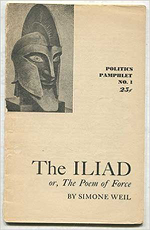
Necessarily, there is a limit to the number of essays one can collect in a single volume. While the number is more than anything else we have had in the past (coming in just under 400 pages), certain essays do not appear that one might have hoped to have included. Most striking of these is “The Iliad: Poem of Force,” and, perhaps, “Reflections concerning the Causes of Liberty and Social Oppression,” although the latter is from 1934 and thus is part of Weil’s early works. What is also notable about the what-is-missing-category is that, excepting the wisely chosen “The Pythagorean Doctrine,” and a summary of it, there are none of the many essays on the Greeks that Weil wrote in Marseille. All of these are available in other editions, though.
The Translation
Recounting a story of a frustratingly close reading session of one of Weil’s works, the editors concluded that the earlier good-willed translator who they were reading may have rendered Weil’s words in an elegant, and even mellifluous style that was not really Weil’s. In translating each of these essays, then, they chose to do so at the literal end of the translator’s spectrum. They are scrupulous about it, working to keep as close as one possibly can in English to Weil’s own word order, and even punctuation.
If what Weil wrote is in French single sentence, they never convert it into two. They keep her use of homme (man) as a generic term. They also generally translate a single French word consistently by way of a single English word. In doing so over the course of the twenty-one essays, their hope is to get a consistency in wording and style that may well escape any reader who has had to use several different translations to read Weil’s very broad corpus. Since the point is to let the reader read closely – and here their work is particularly valuable for classroom discussions – the choice is a wise one.
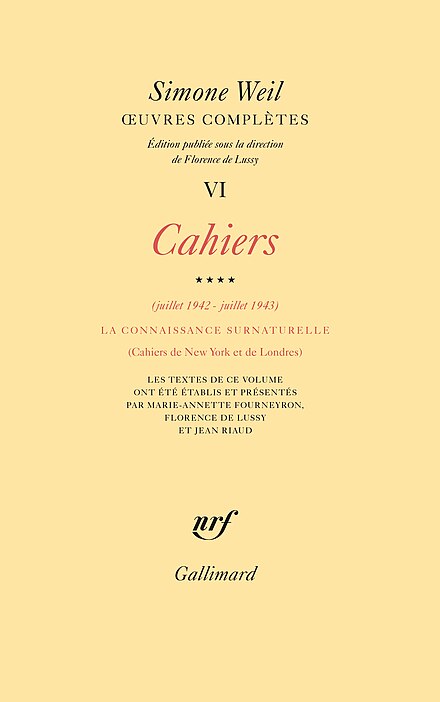
At times, however, this otherwise informative approach brings the reader up short. The editors follow the Œuvres complètes very closely, which in its turn has always sought to render in print exactly what is in Weil’s manuscripts. Thus, for example, the essay “What Does the Occitanian Inspiration Consist in” does not have the expected question mark at the end, since it is missing in the original manuscript. However, most of the time, when there is a word choice that might be confusing, the editors offer help with various ellipses, including ones for variants in the manuscript, and, as needed, they also add explanatory footnotes. A good example comes in the essay “Theory of Sacraments” (sic). There Weil discussed the nature of the efficacity of the Eucharist and said it would not be what it is except “as a sign and by convention.” Many an anglophone has taken “convention” to mean “socially arbitrary,” thus taking the Eucharist to be something that we, as a matter of convention, think signifies God’s presence – but it doesn’t have any basis in reality. In short, a Zwinglian view. The translators here note carefully that convention can also mean “agreement.” Think, for example, of the Geneva Conventions. (I might note – though the translators do not flag it – that in a similar discussion Weil used the word pacte.) This explanation then makes sense of her going on to say that “[a] convention relating to absolute good can only be endorsed by God.” This is theologically correct. The convention is divinely instituted, and not arbitrary, although it is not in the nature of things. It is a relation that is beyond nature. An even more accurate term would be “covenant,” but not having a formal theological education, it is likely not to have occurred to Weil to use it.
There are, though, some points where the quest for consistency and the effort to make the English as transparent to the original manuscripts and original as the French is not as helpful as it might be. In the case of the title of the aforementioned essay on the sacraments, I fail to see why they render “Théorie des sacrements’ as “Theory of Sacraments” which is neither good English nor is the omission of the “the” warranted by the French. Des is a contraction of de les, “of the.”
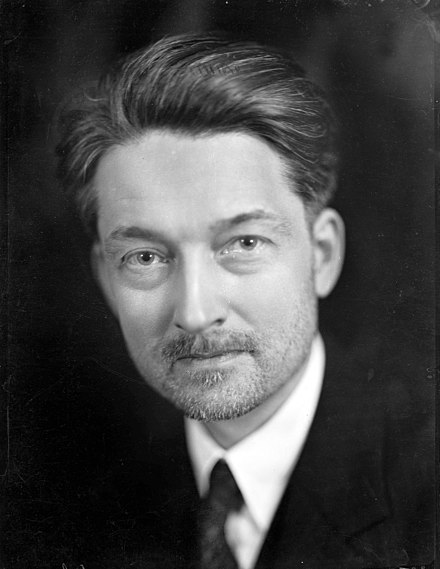
Another instance in which this quest for consistency raises a question is in the very important essay, “Is the Human Person Sacred?” In earlier translations, it was variously translated as “Human Personality” and “What Is Sacred in Every Human Being?” In this essay Weil explicitly attacked the philosophy known as “Personalism.” For a long time, no one was quite sure which of the French personalists she had in mind. It is now beyond doubt that it was Jacques Maritain.
Now, here is where this new knowledge is of some importance to a translator: For Maritain, le personne is the bearer of what we in English would call “personality.” Persons have, and can develop personalities; that is what it means to be a person. When the personality is gone and cannot be recovered, as in the case, say, of those who have been touched by Alzheimer’s Disease, we tend to think the person is gone. So, in this way, the two terms can be interchanged, and at times, to my mind, should be, if one is to get Maritain’s conceptual point. Sometimes this is for understandable English; sometimes it is to point the reader to the conceptual target Weil actually had in mind.
The point of a new translation is in part to use new and current knowledge about the writer. But by translating personneconsistently as “person” and never as “personality” these points can be lost because of the very consistency. For example, in an early paragraph, Levy and Barabas have Weil asking why, “if the human person in him were sacred to me” I shouldn’t gouge out someone’s eyes?, and then giving this answer: “If the human person in him was sacred to me, I could easily gouge out his eyes.” Here, Weil links the person to particular aspects of his person, such as eye color, arms, thoughts, etcetera.
It seems to me that one loses nothing, and gains something important in understanding, to put “personality” in each of these cases that “person” is used. At other points, “person” is appropriate. And, what does it even mean to say in English “the human person in him”? I suspect in English, “person” tends to be taken as the same thing as “human being,” which leads to a problem for the translator.
All this is arguable, I am sure, but pointing it out does suggest that a reader who is not able to check the original French might do well to check more than one translation to get a sense of the wide range of possible meanings of a term. That is simply what we are always faced with in translating. One has to make choices.
Conclusion
It is a reviewer’s job to pick and poke like this. Even so, the reader should not think that these few critical points in any way lessen my admiration for the job that Levy and Barabas have done. The thoughtfulness of the principles they have employed is admirable. I hope that their attentive approach makes one appreciate all the thoughtful effort that went into their work.
Most assuredly, the future will treat this volume kindly. It will, and should, become the major source that most readers of Weil will use. It deserves to hold a primary place in the library of every reader of Weil. We are in Levy’s and Barabas’ debt for having given such a gift to all of us.
About the Reviewer
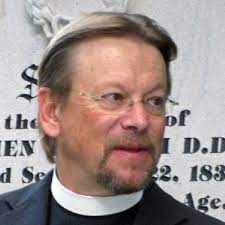
Eric O. Springsted has spent a career as a scholar, teacher, and pastor. Co-founder of the American Weil Society, he was its president for thirty-three years. He is the author, editor, and translator of thirteen books, including several on Simone Weil. Most recently, these include Simone Weil for the Twenty-First Century (Notre Dame: University of Notre Dame Press, 2021), editor and translator of Simone Weil: Late Philosophical Works (Notre Dame: University of Notre Dame Press, 2015), and co-editor (with Ronald Collins) of A Declaration of Duties toward Humankind: A Critical Companion to Simone Weil’s The Need for Roots (Carolina Academic Press, 2024). Springsted is on Attention‘s Advisory Board and is currently working on a book titled Having an Inner Life.
Recommend
